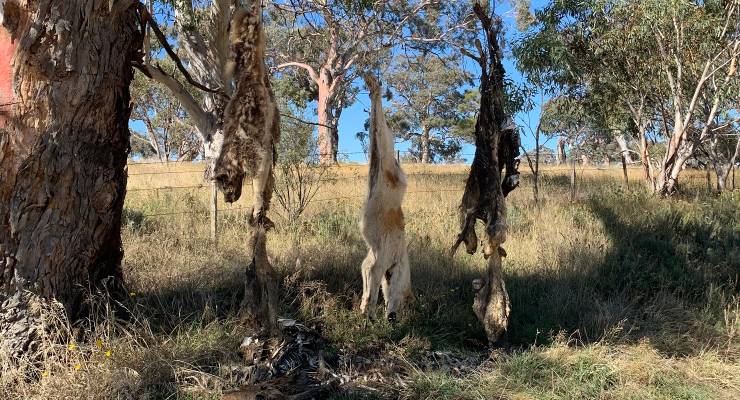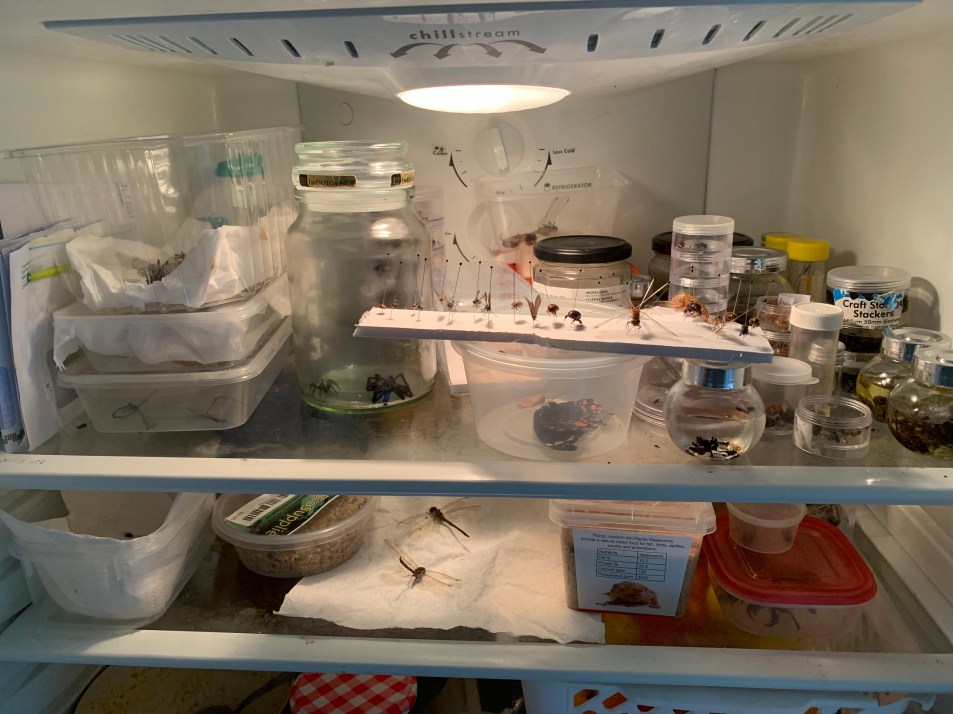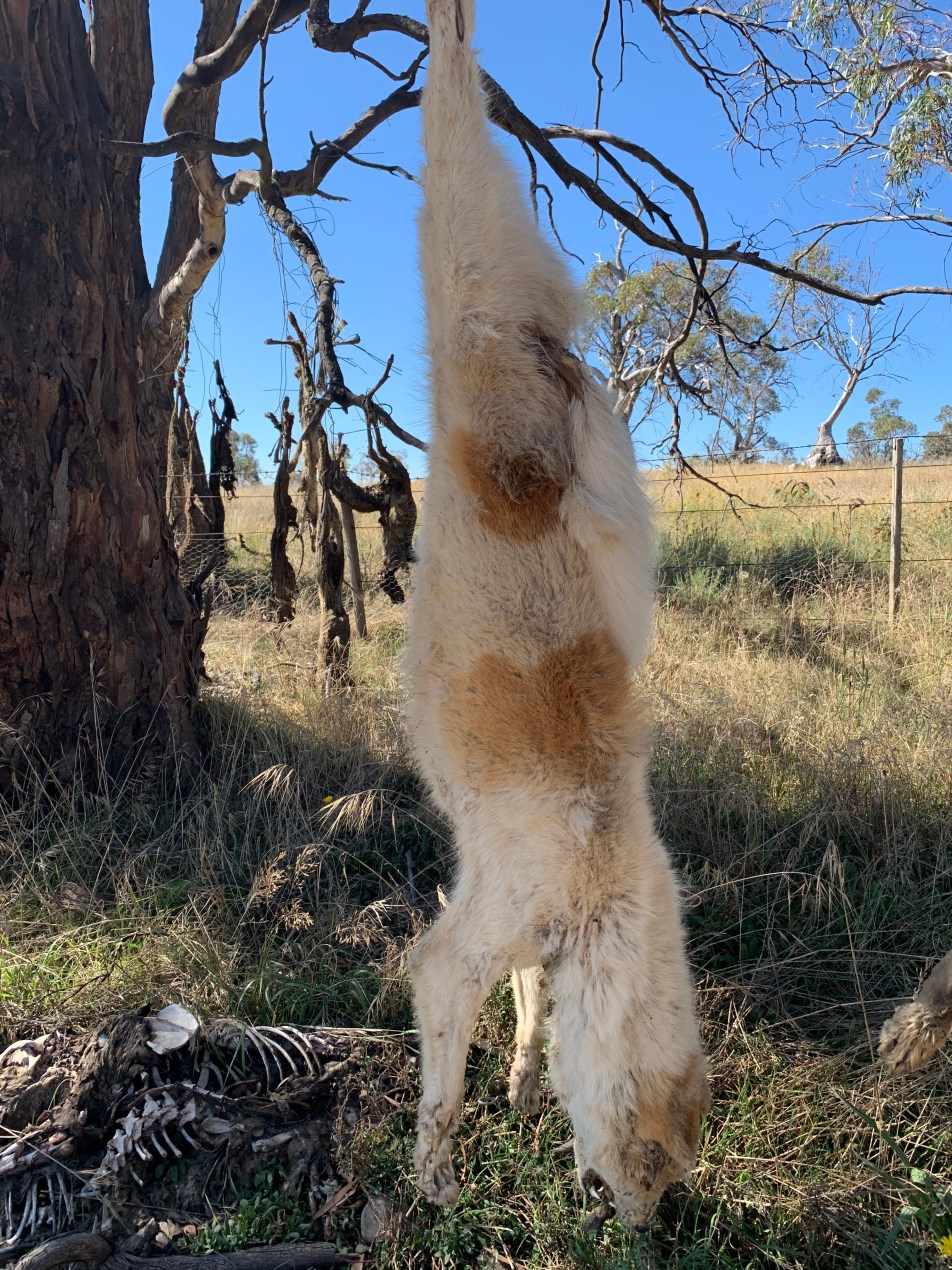
“You’ve got mail” is no letter-opening ceremony for dingo researcher Dr Kylie Cairns. An Australia Post parcel addressed to her could be anything from a giant bottle of blood (which she says makes her think, “How did you do that? How did you get that in there?”) to a whole dingo head. Occasionally these dingo consignments even come hand-delivered from Cairns’ extensive network of citizen scientists.
“Normally, I ask people to preserve it first by putting the dingo parts in a bag of salt before they send it in. But if they’re in the desert it’s already dry, so all they have to do is cut an ear off, put it in a paper bag and send it in. It’s kind of like jerky,” Cairns told Crikey. “Sometimes I say to the mail room, ‘Ooh, put that one straight in the freezer, please’.”
Cairns has conducted genetic research on dingoes and “wild dogs” for the past six years to ascertain what proportion of the Australia’s canine population are dingo purebreds compared with dingo-wild dog hybrids.
She found dingoes (and dingoes only) dominated the national population of wild dogs: 88% of the Victorian wild sample; 62% in NSW; 83% in Western Australia; 88% in South Australia; 69% in the Northern Territory. Nationwide it levelled to 70%.
Despite the good news, Cairns says it’s problematic because Australian dingo management — at national, state and territory levels — goes by a “wild dog” catch-all. In short: dingoes are deemed wild dogs (or indistinguishable from wild dogs and given the wild dog treatment) and wild dogs are deemed pest species.
In Victoria, for example, dingoes are listed as a threatened and protected species, but that comes with caveats. While they’re protected in the core of national parks, they’re free game within 3km of private land boundaries because “wild dogs are declared as pest animals and can be legally controlled” and “dingoes cannot be reliably visually distinguished from wild dogs”.
In NSW, dingoes are considered wild dog (pests) and managed under a nil-tenure policy. This means they receive the same royal treatment — “ground baiting, aerial baiting, trapping, shooting and fencing” — across the state.
South Australia has a dingo fence (to keep dingoes and wild dogs at arm’s length of livestock) so any dingo on the wrong side of that is free game for farmers. In short, says Cairns, north of the fence there are protection zones, but south of the fence “they want to completely exterminate them, even in national parks”.
Defining dingoes and their look-alikes
DNA studies estimate dingoes have been in Australia between 4000 and 18,000 years, and Australian National University research estimates it is closer to 3500 years. By legal and most First Nations’ metrics, that makes the animal Indigenous and native.
“Anything that was here prior to white people coming, that’s Indigenous,” founder of Dingo Culture — a mechanism for a First Nations’ voice on management of the dingo — Jirrbal Rainforest woman Sonya Takao said.
Under the Environment Protection and Biodiversity Conservation Act 1999 (EPBC Act), for a species to qualify as “native” it must be “Indigenous” (meaning it originated in Australia) or present in Australia before 1400. The Climate Change, Energy, the Environment and Water Department tells Crikey the dingo passes the pub test for native status.
The animal is not however considered a threatened species under the EPBC Act. It was nominated for a listing in 2017 but knocked back due to insufficient population data.
Cairns’ dingo research taps into this data deficit with specimens from all over the country. The DNA samples come from roadkill, dingo trees or dingo fences, which are basically show-and-tell spots for farmers to hang what they’ve shot. The dingoes (and dogs) are pinned to a post (or from a branch) by their ankles. For scale, a dingo dangled on a one-metre fence post will have its head on the ground and its feet above the tip of the picket.

“It’s to make a statement: ‘I killed this dog, it won’t come bother you now,’ or ‘Look how many I’ve killed’,” Cairns said. “They’re awful. The smell is awful. The sight is awful.”
On one dingo sampling mission, Cairns commandeered the family holiday and packed everyone — husband, kids, brother-in-law and his kids — into a car to chase down a dingo tree nearby.
“We got to a dirt track, turned down it, and 200 metres along there was this tree that had about 15 dingoes hanging in various states of decay. I thought, ‘I have to get out and get samples, I’ve got to’,” she said.
Cairns upgraded her Birkenstocks for a pair of gumboots and, armed with scissors and a collection kit, got out of the car (with the entire extended family) to start snipping off dingo ears. Midway through, she says a farmer drove past, slowed down, and gave the entourage a curious look.
“We tried to play it cool,” Cairns said. “We pretended we were changing shoes and going to the bathroom and thankfully he drove on.”
The kids offered many an “ew”, she got her samples, and the family holiday resumed. Post-testing, Cairns confirmed that all the “wild dogs” on that tree were pure dingo.
Sharing the load
While Cairns is most comfortable getting her hands dirty out in the field, her sample size is credit to the army of citizen scientists she’s recruited through social media. Callouts go to her Facebook page — Dingo Genetics Research — as well as an array of other groups, including wild dog controllers.
“We might not agree on a lot of things, but we come together on this, sending wild dingo ears in,” Cairns said. “Someone sent me 20 ears from dingoes they’d shot on their property.”
One of Cairns most active respondents is citizen scientist Tamara Venables. She’s been in the game since 2018 and collects far more than just dingoes. Mid-explanation to Crikey that a dingo skull is 30% larger than a dog, Venables interrupts herself because she’s just seen what she believes is a bandy-bandy snake dead on the side of the road.
“I’m going 100km/h, I’ve got a car coming up behind me, but I’m going back for that,” she said.
The snake turned out to be a bit of rope which Venables says “happens a lot” when you’re always on the hunt for creatures to collect (small animal) or sample (large animal). Many of hers wind up in the Australian Museum, but not without a pit-stop in Venables’ fridge first.

“I usually collect up a store of specimens before I do a run into the museum with an esky of dead animals,” she said, confessing that despite the home fridge and freezer full of carcasses, she’s a vegetarian. “Some of the big animals I don’t bring home. I mean I’m definitely not fitting a wallaby in my freezer, but I do currently have a dingo in there.”
Venables has come a long way since she first picked up a dingo roadside in the Blue Mountains five years back. When she saw the animal lying dead on the shoulder, she says she was shocked: “I’d never heard of dingoes in the mountains, but I knew when I saw it that it was a dingo.”
She drove on, stewed on it, and three days later decided to return for parts. Venables wanted to know for sure what it was: “It was summer, so by this stage the dingo was in a poor state of decay. I was essentially trying to collect a tissue sample from something that was more maggot than animal.”
That chewed-up ear stayed in Venables’ freezer for 12 to 24 months before she got wind of Cairns’ research. Unfortunately, that very first dingo didn’t wield any DNA results — Venables’ theory is that the maggots did a number on the animal’s genetics when they devoured it — but it marked the beginning of her dingo DNA endeavours.
The national hunt for dingo
When someone reports a dead dingo in Sydney and surrounds on any number of the social media forums she frequents, Venables — just like Cairns — jumps on it.
“I can run south, duck west, or go out north for these samples,” she said, caveating that when she says “duck up the road” it’s a three-hour one-way trip.
Most of these recovery missions happen in the dead of night (and in “hairy places”) because Venables says there’s only limited time to grab a sample before the carcass starts to decompose.

But the prevalence of wild dog baiting, shooting and trapping programs means there is no shortage of dingo specimen to collect.
Adrian Tomlinson, chief executive officer for the Arid Lands Environment Centre, says the longstanding rationale for eliminating the animal is that dingoes kill livestock. He points to a growing body of research that dingoes pose not only a small risk to sheep and cattle, but baiting them has an adverse effect. The result is death to older dingoes, which curates a population of troublesome teens who’ve never been taught by their elders to properly hunt and are therefore more inclined to go after livestock. Plus it’s immigration 101: the vacancies draw in more dingoes from further afield.
Federal member for Lingiari Marion Scrymgour tells Crikey that it’s a “tricky one” weighing up the animals with the needs of pastoralists, landowners and Indigenous people.
“Some of the purebreds I’ve seen out bush, they’re really bony and in poor condition. If these dogs were in communities, they’d be put down,” she said. “When they’re at a point of starving, that’s when they do become a danger and there’s real issues.”
In letters to Lingiari constituents (seen by Crikey) before the 2022 federal election, Scrymgour was clear that dingoes are not wild dogs and that the national wilddog action plan is “completely inadequate for today’s situation”, particularly because it lacks input from Aboriginal custodians and Indigenous rangers.
In her capacity as MP, Scrymgour would not comment on the current national approach, but reiterates that it’s a matter of balance.
Takao says dingo management is something that’s never had the benefit of balance, with First Nations’ voices absent from the conversation. In September, she will convene Australia’s first national dingo conference as a means for Indigenous people from across the country to have their say on dingo management.
For many First Nations communities, the dingo carries cultural significance — spiritually, through the kinship system, and as a totem animal. There’s Dingo Dreaming too. Takao shares her people’s creation story with Crikey: the dingoes chased the kangaroos from the Atherton Tablelands to the coastline in Innisfail, all the way down to Ingham and then way out west. One dingo called Gudamy tired, sat down to rest and turned to stone.
“That’s why there’s no kangaroos between Tully and Ingham because the dingo chased them all out west,” she says.
The conference will be an opportunity for people “from the sandy desert through to the Blue Mountains” to share stories and science: “It’s the first time since colonisation that we’ve been brought into this debate. So this is going to set a really strong precedence for First Nations people.”








Cats are the biggest problem, and foxes. Dingoes eat both so get a big tick from me. Introducing ferals has wiped out so much. Bus-sized rabbits, a.k.a. camels, one of the worst. But then it was sheep which caused all the trouble, conflict, war, genocide. Erosion machines.
According to DNA studies published in 2018, the dingo arrived in Australia close to 3200 years ago (ref). Before that time the thylacine and devil were extant across the continent mainland but the absence of younger remains shows that they were driven to extinction as the dingo spread across the country.
Around that time, the Austronesian people were spreading across Southeast Asia. Having a dog in their open boats would have been useful watchdogs in crocodile country, as well as eating all refuse in the boats and their middens, and becoming edible in their turn. A single escaping dog would leave no descendants unless it met up with other dogs already there.
The purity of the dingo DNA supports the idea of a single gravid female ancestor. However the purity raises the puzzle as to why there were no other dogs in Australia at that time. Dogs that came with the aborigines must have found the Australian environments more hostile than those experienced by the dingo, so died out. Although the arrival of the dingoes must have raised a fresh wave of extinctions, the environments were already under pressure from homo sapiens. Dogs visibly similar to the dingo are still found around humans in Assam, probably once extant around settlements across the Ganges delta.
ref:
https://www.ncbi.nlm.nih.gov/pmc/articles/PMC6053400/
A pregnant dog arriving here with beche de maire fishermen would then have its pups abandoned when they returned home. Cats came off Dutch shipwrecks on the west coast and were Australia wide when Cook arrived. Foxes took 70 years to spread from release in Victoria to 80 mile beach in the Pilbara. Camels double their population every 8 years given good conditions. Amazing we do almost nothing about these disasters. Pigs are everywhere they can get water and will carry fmd when it arrives, ineradicably.
I’m no expert, but wouldn’t the thylacine have filled a similar ecological niche to a dog? It certainly looked like one.
In the words of one aboriginal leader ‘dogs are there to keep the camp clean’. Therefore its unlikely that the thylacine would fill the same ecological niche as the dingo unless they ate excrement. Do we know if they did?